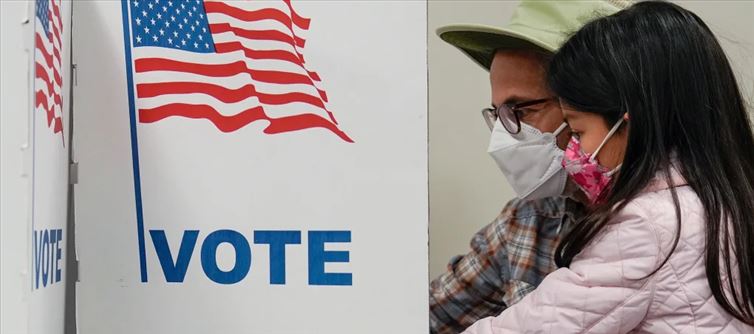
Early Results vs. Final Tally: The Surprising Truth
As Americans head to the polls in 2024, the landscape of election night reporting is likely to be filled with familiar phenomena: the "red mirage" and the "blue mirage." These terms, coined during the tumultuous 2020 election, refer to the way initial election results can mislead voters and observers, often creating a distorted picture of the race in the early hours after the polls close. Four years ago, in 2020, the "red mirage" was particularly pronounced in key swing states, as President Donald Trump’s early leads were eventually overturned as more mail-in ballots were counted. In 2024, while similar dynamics are likely to unfold, several states have made changes to their election processes that will influence when and how these "mirages" appear.
The red Mirage: Why Early Results Can Be Deceptive
The "red mirage" typically occurs because of how votes are counted across different states. In many states, rural and less populated areas tend to report their results more quickly than urban centers. In 2020, areas that favored trump — often smaller, more rural counties — reported early, giving the appearance of a strong lead for the former president. Conversely, larger, more diverse urban centers, where Democrats tend to perform better, took longer to count and report their results, skewing the overall picture later in the night.
This pattern is expected to continue in 2024, particularly in states like Michigan, where early results may exclude Detroit, or Nevada, where Las Vegas may not be included in the initial counts. In these cases, early returns could favor Republican candidates, only to be overtaken as votes from more populous, Democratic-leaning areas are counted later.
The Role of Voting Methods
A key factor contributing to the mirage effect is the method by which ballots are cast. States report different types of ballots — early voting, election Day voting, and mail-in voting — in phases. And each of these methods tends to favor different political parties.
For example, in 2020, Democrats were more likely to vote by mail, which led to a surge in mail-in ballots counted later in the night or days after election Day. As election officials processed mail-in ballots, many of which came from Democratic-leaning cities, the results shifted in favor of Joe Biden, giving rise to what became known as the "blue mirage" in some key battleground states. This shift can be dramatic, and voters or commentators relying only on early results can be misled.
States with more mail-in votes are likely to experience this phenomenon again in 2024, particularly in states like pennsylvania and Wisconsin, which have specific rules about when ballots can be processed. In these states, local elections officials cannot begin opening mail-in ballots until election Day, causing delays in counting. In contrast, states like florida allow ballots to be opened in advance, which helps speed up the reporting process and reduces the potential for any mirage effects.
Blue Mirages: A New Twist on the election Night Landscape
In addition to the red mirage, a “blue mirage” could emerge in 2024, particularly in states where Democrats are expected to dominate the early vote. North Carolina, for example, has passed new laws that prohibit the acceptance of mail-in ballots after election Day. The state will likely count most of its early and mail-in votes first, which could give Democrats a temporary advantage. However, once election Day votes are tallied, the results could shift, especially if the outcome is close.
georgia, another key battleground state, has seen significant changes to its election laws since 2020. New restrictions on mail-in voting and expanded early voting opportunities are expected to speed up the counting process. With fewer mail-in ballots and more early votes counted on election Day, georgia could avoid the mirage phenomenon altogether or experience a much quicker resolution compared to 2020.
Arizona: A State of Early Surprises
Arizona presents a particularly interesting case when it comes to mirages. Known for its heavy reliance on mail-in voting, the state counts ballots in the order they are received, not by the time they were cast. This means that Democratic candidates, like Vice President Kamala harris in 2020, could gain a sizable early lead in Arizona, especially if early mail-in ballots are counted first. However, as election Day ballots are counted — and these tend to favor Republicans — the early advantage could quickly dissipate, leaving observers with an inaccurate early picture of the race.
How to Navigate election Night Expectations
Understanding these "mirages" is crucial for voters and analysts alike. The early hours after the polls close will be filled with shifting results as different types of ballots are counted in varying sequences depending on state laws. It's important to remember that initial results, especially in key battleground states, are often incomplete and can dramatically change as more votes are processed.
While the 2024 election is likely to feature familiar patterns of red and blue mirages, changes in state laws and voting procedures may alter how quickly results emerge. Voters should be prepared for a night that could stretch late into the morning, with the final picture only becoming clear after all ballots — whether cast in-person, by mail, or early — are fully counted.
Ultimately, while the initial results may paint a picture of an early advantage for one party or the other, it's the final, complete tally that will decide the election. So, while it’s tempting to draw conclusions based on the first returns, patience will be key to understanding the true outcome.

